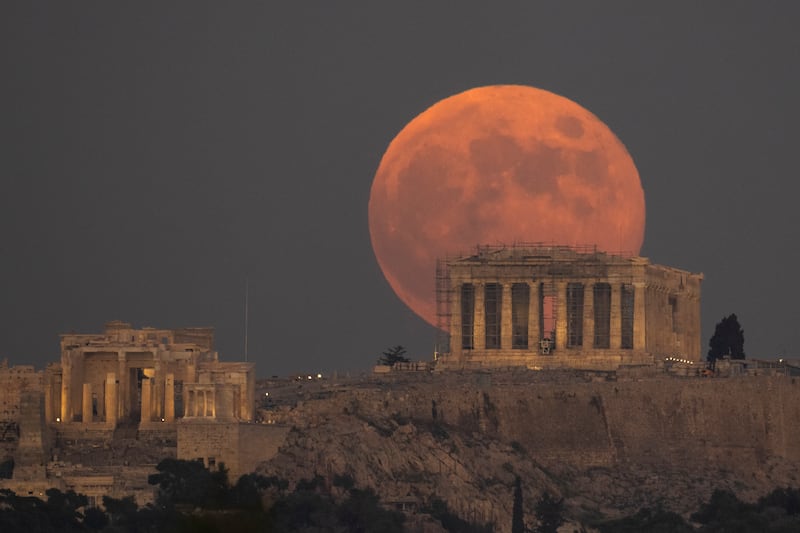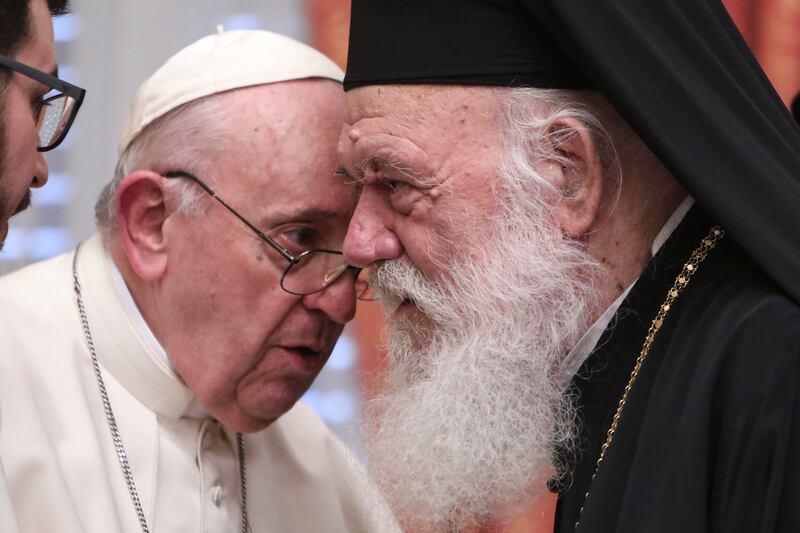Pope Francis has announced that after two centuries, the Vatican will return three 2,500-year-old pieces of Parthenon marble to the Greek Orthodox Church.
What is Pope Francis returning to the Greek Orthodox Church?
According to The Guardian, the Vatican announced that it will give the 2,500-year-old artifacts to Archbishop Ieronymos II, who is the head of the Greek Orthodox Church. These ancient artifacts include a head of a horse, a head of a boy and a bearded male head. Reportedly, the Vatican has had them in its possession since the 1800s.
These artifacts are remnants of a frieze, according to The Associated Press. Acquired by the Vatican in 1816, “The 5th century B.C. sculptures are mostly remnants of a 160-meter-long (520-foot) frieze that ran around the outer walls of the Parthenon Temple on the Acropolis, dedicated to Athena, goddess of wisdom.”
Greece’s Culture Ministry approved of the Pope’s decision to donate the fragments to the Greek Orthodox Church.
Pope Francis is not returning the artifacts to the state of Greece, but to the Orthodox Church. Art Net News reported, “The Vatican’s statement clarified that the donation was a spiritually motivated gift between one church and another, and not a bilateral state-to-state return.” This decision came after the Pope met with Archbishop Ieronymos II in late December 2021.
Pope Francis reportedly apologized during his trip to Greece. Catholic News Agency reported that at this meeting in Athens, the Pope had apologized for previous actions “that had little or nothing to do with Jesus and the Gospel, but were instead marked by a thirst for advantage and power (and) gravely weakened our communion.” He made this apology during his apostolic trip.

What about the Elgin Marbles?
This move is ecumenical, the Vatican said, according to Bloomberg. The decision to return the artifacts could also put pressure on the United Kingdom to return the Elgin Marbles, which also originally came from the Parthenon, to Greece. The Guardian reported that Greece has repeatedly requested that the Elgin Marbles be returned, but the British Museum has denied the requests. Lord Elgin removed the artifacts from Greece in the 19th century.
The British Museum has said that the artifacts were acquired legally in response to claims that they were stolen.
“Lord Elgin, the British diplomat who transported the sculptures to England, acted with the full knowledge and permission of the legal authorities of the day in both Athens and London,” the museum said in a statement. “Lord Elgin’s activities were thoroughly investigated by a Parliamentary Select Committee in 1816 and found to be entirely legal. Following a vote of Parliament, the British Museum was allocated funds to acquire the collection.”
Reportedly, museum trustees have had preliminary discussions with the Greek prime minister about returning the artifacts, according to The Guardian, but no decision has been reached yet.
The Parthenon is located at the top of the Acropolis in Athens and was originally dedicated to the goddess Athena (Athena Parthenos, which means the Virgin Athena). According to Britannica, the temple was built in the Greek style known as Doric during the mid-fifth century B.C.
This building is an important landmark of Greece. History.com said tradition holds that Pericles ordered the construction of the temple, and that he “commissioned the renowned Greek architects Ictinus and Callicrates and the sculptor Phidias to design the Parthenon, which became the largest Doric-style temple of its time.”



